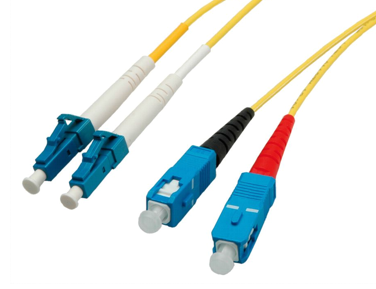OS class
Optical fibers are classified according to their properties. In the case of multimode fibers, the classification is made in the OM classes, and in the case of monomode fibers in the OS classes. The OS class is the specification of high- performance monomode fibers as used in high-speed networks.
This OS classification of monomode fibers introduced by ISO/ IEC is used to identify newly developed high-performance optical fibers for use in 10 Gigabit Ethernet and in other networks for Gigabit Ethernet.
There are two OS classes for single mode fibers: OS1 and OS2. OS1 conforms to ITU-T G.652 specifications, while OS2 class monomode fibers conform to ITU-T G.652C or ITU-T G.652D standards. The difference lies in the cable construction and less in their characteristic values. OS1 is a solid core for indoor installation, campus cabling and data centers, whereas OS2 is a hollow core for outdoor installation and is suitable for blowing into conduits. OS2 class monomode fibers are used with CWDM technology.
OS1 has greater attenuation compared to OS2, which is 1 dB/km for OS1 and 0.4 dB/km for OS2. The attenuation values apply to wavelengths at 1,300 nm, 1,383 nm and 1,550 nm and are also reflected in the bridgeable distance. Distances of up to 2,000 m can be bridged with OS1 optical fibers and 5,000 m to 10,000 m with OS2.
OS2 is available with different face couplings. Namely with Physical Contact( PC) and Angle Polished Convex( APC). The FOC connectors, patch cables and installation cables are color-coded. The FO connector with PC face coupling is blue, the one with APC coupling is green. The cable sheath of OS optical fibers is yellow.

